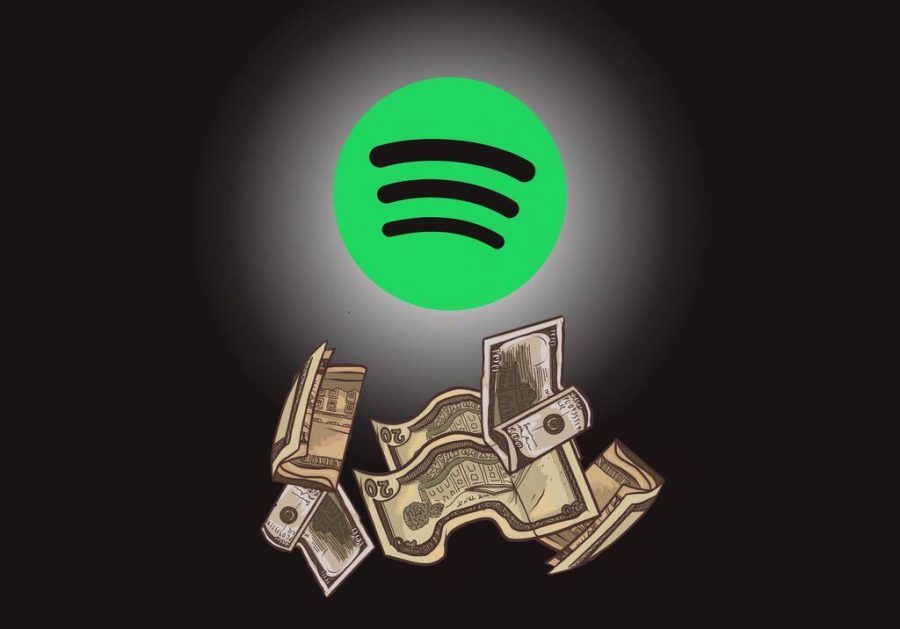Spotify launched its Loud & Clear website at the end of March in an effort to increase transparency and break down the economics of their platform. It came days after the Justice at Spotify campaign organized protests at Spotify offices in over 31 cities with the support of 27,000 artists. The demands of this campaign include giving at least a penny-per-stream in royalties and adopting a user-centric payout model. Spotify’s response to this collective action is on the front page of their website: “We Hear You Loud & Clear.”
For a year, artists and music industry workers have had their financial stability upended from the devastating impact of the pandemic on live entertainment. The biggest revenue streams — touring and performance royalties — disappeared as concert venues and restaurants were shuttered, forcing artists to rely solely on revenue generated from streaming services. As a result, the fight to make streaming revenue more equitable for artists has seen a renewed sense of focus and urgency.
While independent artists struggled to make ends meet, Spotify doubled in value in nearly three months, touting a $50 billion market valuation. The founder and CEO of Spotify, Daniel Ek, responded to public scrutiny in an interview with Music Ally. “Obviously, some artists that used to do well in the past may not do well in this future landscape, where you can’t record music once every three to four years and think that’s going to be enough,” Ek said, sparking further criticism from members of the music industry.
The Union of Musicians and Allied Workers formed last year to mobilize music workers in opposition to Spotify’s streaming practices. They aim to “collectively take resources and power from the few wealthy companies that dictate (their) industry” and create fair practices. In mid-October, they launched their “Justice at Spotify” campaign. Alongside the aforementioned demands, the campaign also demands an end to all forms of payola (or pay-for-play in the music business), a decrease in lawsuits against artists and an overall increase in transparency.
Days after “Justice at Spotify” launched, Spotify moved in the opposite direction. They announced their Discovery Mode, which would allow artists to receive increased visibility on listeners’ algorithmically-generated playlists for a reduced promotional royalty rate. This is similar to the historical form of payola in the music business: providing bribes or incentives in exchange for radio airplay or exaggerated sales reports. This was met with derision from artists and fans alike, as artists with already-low streaming rates will see their rates decrease when attempting to reach new listeners or make money. The UMAW called it a form of payola. It has been perceived by many as Spotify’s effort to reduce financial obligations to rights holders and finally become a profitable company. Yet, this Discovery Mode is not mentioned on Loud & Clear.
In fact, the new website offers very little for artists. The UMAW expressed their displeasure towards Loud & Clear in a statement issued to Pitchfork: “We asked for transparency, but this website answers none of our questions about the sources of Spotify’s income in addition to subscriptions and ads, payola schemes for playlist and algorithm prioritization, or the terms of their contracts with major labels. We have demanded that Spotify stop fighting to lower songwriters’ royalty rates, but this is not addressed.”
The website is broken down into sections including the “Streaming Economy” and the “Musical Voices” within it. There is a short and peppy video titled “Loud & Clear: How The Money Flows.” It states that two thirds of Spotify’s revenue is given to the rights holders — the general term for labels, distributors and collecting societies. There are bubbles of revenue figures that break down how many artists fit within general revenue thresholds, from $1K to $1M. There is a FAQ section with general questions and optimistically opaque answers. When answering the question on whether an artist is paid a penny per stream on Spotify, the answer only declines the rate, while noting that “Spotify generates more money for rights holders than any other streaming service.”
Spotify does little to justify their streamshare royalty model on the website, which works by collecting revenues into a single pot and proportionally distributing it to artists according to the percent of total streams they account for. This is also known as a pro-rata model, and it is a big point of contention for the UMAW. They argue that this system disadvantages niche artists and contributes toward a highly-skewed system that benefits major label artists. They believe that a user-centric revenue model would make streaming more equitable.
Charlie Hellman, Vice President of Marketplace at Spotify, countered this claim in an interview with Pitchfork. “We recently contributed to some inquiries about [a user-centric model],” Hellman said. “Unfortunately, the result of that research was that it does not seem like it’d have the effect we had hoped for, which was to shift more royalties to developing artists, and instead might have the opposite effect.” However, this is contestable.
Music Ally outlined a report from Finland that analyzed Spotify user data to compare pro-rata and user-centric payment models. They analyzed over 8 million streams across 10,000 tracks and 4,493 artists, and later verified the study with a sample five times this size. What they found was that, in a pro-rata model, songs recorded by the top 0.4% of artists got 9.9% of the money. When they hypothetically applied a user-centric model, the same top 0.4% of artists would only have received just 5.6% of the total cash. This promising information has helped fuel the push for a user-centric payment model.
Loud & Clear also does nothing to address the streaming manipulation from the widespread proliferation of streaming farms and botnets on Spotify’s platform. These bots rig devices on hacked or free accounts to stream specific songs in order to trigger a royalty payout. Louis Posen, founder of Hopeless Records, told Rolling Stone that “three to four percent of global streams are illegitimate streams,” which comprises approximately $300 million in potential lost revenue. Due to Spotify’s streamshare model, these inauthentic streams are stealing revenue from all artists on the platform. But Spotify has no incentive to do anything about these streams because they are still getting their 30% cut of the revenue.
Damon Krukowski, a musician and co-founder of UMAW, told The Fader that Loud & Clear “is essentially restating all their justifications to their investors for why they’re such a great company for the music industry, without responding to anything that artists are saying. It is a lot of reshuffling of the same figures that we’ve seen before that don’t add up to enough for artists…We don’t need to be told how we’re not being paid or why we’re not being paid. We just need to be paid, you know?”
Spotify clearly recognizes the legitimacy of the UMAW protests. However, it remains unclear whether or not the streaming giant will make any moves to transition into a more equitable platform. In his message on the Loud & Clear website, Ek notes that “[Spotify has] much more work to do,” but surrenders that “fans will ultimately decide who succeeds and thrives.” Like his egregious comments last year, many artists and fans are just not willing to accept this answer. Loud & Clear is a step in the right direction, but for now, it has little to offer frustrated artists.
Email Jack Birchler at [email protected].
























































































































































